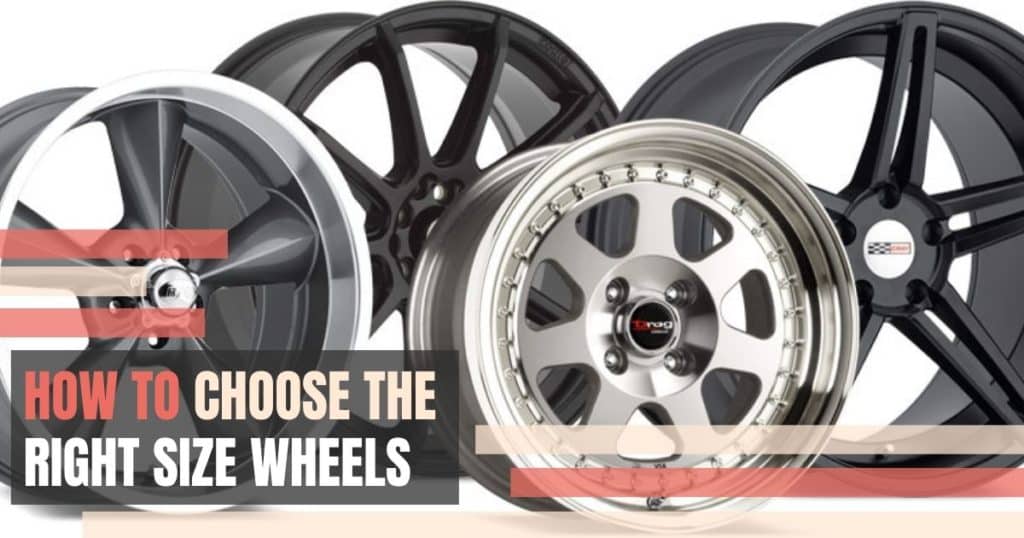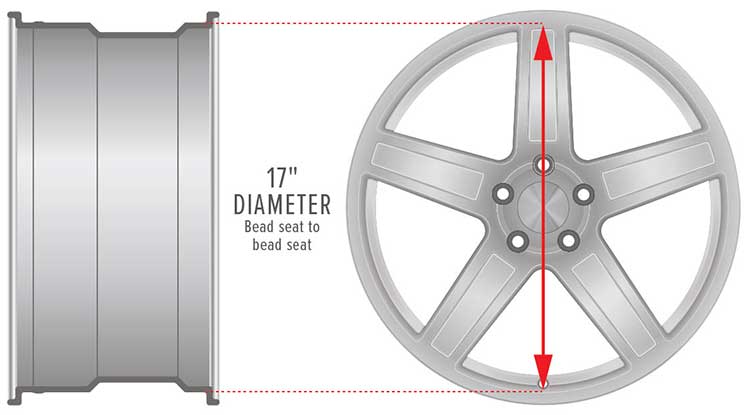Whether you are buying new or used wheels, getting the size right is critical. The size needs to meet the vehicles requirements and also meet the aesthetic you are looking for. Since we are Used Tire Blog, we often get questions about choosing the right size wheels as some folks also are looking to change things up with used wheels. Below we have put together a guide to help you choose the right size wheels including how to size them and find the right safety, fit, and compatibility.
How to Choose the Right Size Wheels
Whether you have a car or a truck the general rules apply across regardless of vehicle type. When it comes to wheels you need to consider style, safety, fit, and technological compatibility. If you are considering a set of used wheels near me, then you also must consider the grade and quality as well.
Style Counts
Throwing some styled wheels on your vehicle can drastically change the look and feel of it. Wheels come in a variety of materials including chrome, steel, alloy, and other metals. They can even come in varying colors and Plasti-dipped to achieve custom colors you want. Depending on your style preferences the wheels can make or break the look of your vehicle.
Sizing also becomes a style choice. For a street look you can increase the diameter of the wheels, which reduces performance as it decreases the tires sidewall height. For better performance decrease the wheel diameter which increases the size of the tires sidewall.
Choose Safety Above All Else
A proper fitting wheel is critical for your safety while driving. There are three categories that need to be considered:
- Overall Diameter: When the tire is mounted on the wheel there must be enough clearance for the internal mechanisms. The inside of the wheel needs to leave headroom for the calipers and suspension. The tire needs to leave clearance for the vehicles body panel.
- Offset and Backspace: It is critical to know how far outside and inside the entire wheel and tire combo sits in the vehicles wheel well. Getting the spacing wrong impacts the body and steering components. You can actually decrease your turning radius with improper offset and backspace.
- Proper Mounting: Todays vehicles come standard with hub-centric fitment. This reduces vibration in the steering wheel or seat when the vehicle is on the road. You need to consider how the fitment of the rims you choose works with your make, model, and year of vehicle. Many after market rims are lug centric fitment which means the lug holes are cut wider to fit on a larger number of vehicles. For some wheel brands you can get small hub-centric metal or plastic ring adapter. These adapters can be installed inside the wheel hub so the fitment changes from lug-centric to hub centric. For more info on hub centric vs lug centric, read here.
How to Choose The Right Size
Wheels come in a variety of sizes. While you can change the diameter of the wheel, the manufacturer recommended tire diameter remains the same. First let’s consider how to properly measure the wheels diameter. A wheel is measured from bead seat to bead seat.
Then if you wish to change the diameter of the wheel it is done with respect to the tire size. This is done through wheel plus sizing and minus sizing. Plus and minus sizing is done to achieve the look and performance you want.
- Plus Sizing: Increase the wheels diameter and decrease the tires sidewall. This is done in respect to the manufacturers recommendation of tire size.
- Minus Sizing: Decrease the size of the wheel while increasing the size of the tires sidewall. This is done in respect to the manufacturers recommendation of tire size.
Not All Wheel Bolt Patterns are The Same
Not all lug nut patterns are the same. That means even if you have the right size diameter wheel, it still may not fit on your vehicle. Just because the wheel hub on your car or truck has 5 bolts and the wheel you want has 5 holes, it may not measure up properly. The bolt pattern on the wheel must match the vehicles wheel hub in order to be mounted. This gets even more complicated when you are trying to find tires and wheels for antique and classic cars.
TPMS Systems Should Be Reset After Mounting Wheels
Vehicles manufactured after 2007 are equipped with TPMS (Tire Pressure Monitoring System). If you put new wheels on a car or truck with TPMS technology you need to reset the TPMS system after the new wheels are installed and mounted.
Risks of Buying Used Wheels and Rims
If you have purchased a set of used wheels from a junkyard or other secondary vendor, you really need to inspect them. Even if you have the size correct, you need to check the overall quality of wheel. You want to inspect for any areas that look bent, check for cracks, and ensure it rolls straight. Additionally you should lay it on the ground to ensure it sits flat and doesn’t feel wavy when you run your hand over it.
If you have purchased a second hand wheel and there are issues with it, seek a repair shop to look at it before you mount a tire on it. Driving on a damaged wheel can cost you alot in damage later and cause an accident.
How to Choose the Right Size Wheels – Final Thoughts…
When its time to choose the right size wheels, whether new or used, you should never consider style or price over safety. Choosing wheels based on compatibility with your vehicles make and model are generally the best course of action. This will ensure safety and proper performance. If you are inerested in plusor minus sizing there are safe ways to do it as long as you designing around the manufacturers tire size recommendations. You have alot of flexibility in terms of sizing, just stay within the bounds of what is safe.


